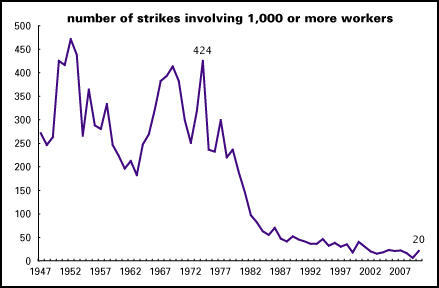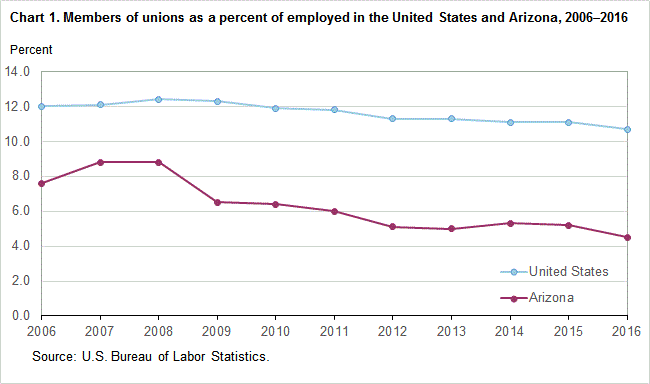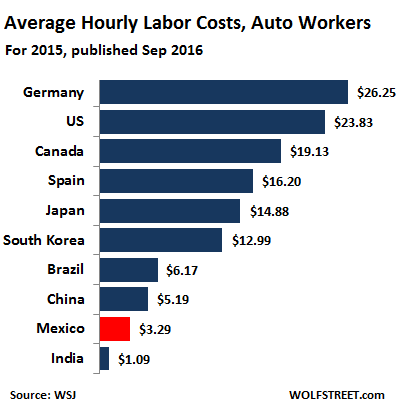Introduction
Strike, sometimes called labor strike or strike action, is a common strategy that labor unions use to express grievances of employees to the employers or the government. According to Özel (2015), the first strike recorded in historic books happened in ancient Egypt in 1152 BC when the royal artisans avoided going to work because of low wages. The modern-day strike organized by trade union leaders took shape during the industrial revolution in Europe where workers felt that they were always exploited and forced to work under an inhumane environment with very low wages.
In modern society, trade unions are more organized and more coordinated than they were in the past. In Mexico, the labor unions have been fighting for the rights of employees across all sectors except members of the armed forces. Issues such as low wages, poor working environment, poor relationship between managers and employees, oppressive policies within working environments, and lack of safety for the employees are some of the leading causes of the strike. In this paper, the researcher will look at strikes in Mexico, determine how the country handles strikes, and compare it with the approach used in the United States.
Strikes in Mexico
According to Dubb (2013), Mexico is considered an emerging economy, with many of its sectors registering impressive growth over the recent past. A section of the society is very rich while others rely on daily jobs to meet the basic needs of their families. Although there is no precise current record of cases of the strike in Mexico, Gómez (2016) notes that such events are common in the country. It is true that the rate of the strike in Mexico has significantly dropped compared with what was the case in the 1990s.
One of the leading reasons for strikes in Mexico is poor remuneration. In 1996, the average earning for a Mexican production worker was $ 1.5 per hour while that for a United States’ worker was about $ 13.4. Cases of the strike were common during this time as trade unions championed for the increase in the minimum wage for its employees. Workers in the industrial sector would down their tools complaining of the poor working environment, poor relations at work, and salaries that could not meet their basic needs.
However, Nee (2014) believes that unionization has become less popular than it was in the 1990s. Cases of the strike have also reduced as employers have come up with better ways of negotiating with their employees before the dispute can result in labor strikes.
How Labor Strike is Handled in Mexico
Handling of strikes is one of the biggest challenges that the government and employers face whenever trade unions opt to use industrial action as a way of solving their disputes. As Özel (2015) notes, strikes may take different forms calling for different approaches to managing them. Employees may decide to come to work but fail to undertake their duties as would be expected. Such cases are common when it is only a specific company’s employees going on strike. Employees of a specific company may opt to stay at home instead of coming to work as a way of expressing their dissatisfaction with the current affairs.
In such instances, the individual employer is often expected to address the issue with the union leaders. The top management is expected to have a dialogue with the leaders to find a common solution to the problem based on the prevailing circumstances. If the issue is about a poor workplace environment, a team can be set up to find ways of improving it. If it is about low pay, the negotiating team can come up with reasonable ways of adjusting the wages to levels acceptable by the involved parties.
Labor strikes that involve national or regional trade unions are often more serious, especially if they decide to march along the streets to pass their message to the relevant authorities. Such strikes are common when it involves employees of national government such as teachers. In most of the cases, such events start peacefully, with the primary goal of the trade unions being to convince the relevant authorities to address the main issues of concern.
However, Gómez (2016) notes that such cases often degenerate very fast in Mexico. Criminal elements often take advantage of such situations to try and steal or vandalize private properties or public infrastructure. It is at such moments that government authorities are forced to come in and intervene. Police crackdowns on strikes were very common in the 1990s in Mexico (Dubb, 2013).
Many people lost their lives in such confrontations with the police. Others were seriously injured, but that did not deter people from getting to the streets to protest whenever they felt their plight was not addressed. Other than the crackdown of strikes using the police, the government has been keen on using diplomatic approaches when addressing these issues. The government of Mexico realized the importance of negotiating with employee’s unions and aligned the department of labor accordingly.
Secretariat of Labor and Social Welfare was created because of the need to ensure that the welfare of the employees is always taken care of in the country. The department works closely with labor union leaders to address any concerns that employees might have both in the public and private sectors. The close working relationship between the labor unions and this secretariat has significantly reduced cases of strikes in the country. Some sporadic cases of go-slows are still common in the country’s private and public sectors. However, the incidences have become less common compared with what was the case in the past.
Comparing Strikes in Mexico and the United States
Labor strikes in the United States have been common, especially among lowest-paid industrial workers. Most of these strikes are organized by union leaders with the view of addressing the concerns of their colleagues they represent. Wildcat strike actions (unofficial industrial) that are not authorized by the union leaders sometimes do occur when employees feel that their union leaders have colluded with the government to ignore their concerns. A report by Nee (2014) indicates that there has been a significant drop in cases of labor strikes in the United States over the last two decades. Figure 1 below shows the significant drop in cases of a strike from 1947 to 2007.

The statistics show that cases of labor strikes were very common in the early 1950s and early 1970s. However, there has been a consistent drop in the number of these strikes from 1977 to 2010. In 2010, there were less than ten cases of labor strikes involving more than 1,000 workers in the United States. Nee (2014) explains that the drastic drop in the cases of labor strikes can be attributed to the fact that labor unions are becoming less popular in the country. The figure below shows the falling popularity of trade unions in the United States.

In the United States, there is a paradigm shift that makes labor unions less relevant to the majority of workers. Many companies are now paying their employees based on the value they bring to the firm. As such, individual bargaining power is becoming more popular than union bargaining power. People are learning how to negotiate for their salary increment at a personal level based on what they offer to their employers. Character, ethics, and social justice, which are core values at Saint Louis University (SLU), are becoming critical in defining employees’ remunerations at an individual level than demands put by trade unions.
Comparative Analysis
The United States and Mexico have experienced cases of strikes for different reasons and at different rates. McQuarrie (2015) argues that the main reason why workers often go on strike is because of poor remuneration. When workers feel that what they are paid is way below the value they give to their employer, they are likely to strike, especially when their compensation is barely able to support their financial needs. One of the ways of comparing cases of the strike in Mexico and that of the United States is to look at the average hourly cost of labor in these two countries, as shown in figure 3 below.

In the United States, the average hourly labor cost of workers in the auto industry is $ 26.25 while that in Mexico is $ 3.29. It means that the pay for one employee in the United States equals the pay of about nine employees in Mexico. It explains why cases of the strike are more common in Mexico than it is in the United States. When it comes to managing labor relations, the United States is moving at a faster rate towards an individualistic approach than Mexico.
Labor unions are stronger in Mexico where many industrial workers still feel exploited and are strongly convinced that they can benefit from labor unions. In both countries, governments are encouraging dialogue between employers and trade unions as a way of addressing the disputes in amicable ways. The use of police force in managing labor strikes that turn violent is common in both countries. However, such incidents are becoming rare in the United States.
Conclusion
Labor relations are a critical issue that employers and governments around the world cannot afford to ignore. When employees go on strike, money is lost in terms of lost manpower. The government is always affected directly by such strikes in terms of reduced revenue from taxes and vandalism of public infrastructure if the striking workers take to the streets. Labor strikes have been common in both the United States and Mexico over the past years. Low pay, poor working environment, and poor employer-employee relations are some of the main reasons for the strike. Although cases of strikes are becoming less common in both countries, the decrease is more pronounced in the United States than it is in Mexico.
References
Dubb, S. (2013). Logics of resistance: Globalization and telephone unionism in Mexico and British Columbia. New York, NY: Routledge.
Gómez, A. E. (2016). The revolutionary imaginations of greater Mexico: Chicana radicalism, solidarity politics, and Latin American social movements. Austin, TX: University of Texas Press.
McQuarrie, F. (2015). Industrial relations in Canada. New York, NY: Wiley.
Nee, P. (2014). How to get rich doing business in Mexico: Mexico business guide and contacts. Boston, MA: The Internationalist Publishing Company.
Özel, I. (2015). State–business alliances and economic development: Turkey, Mexico and North Africa. London, UK: Taylor & Francis Group.